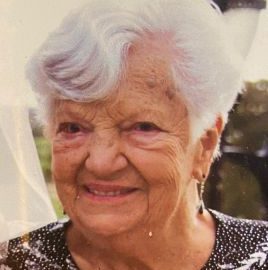SoHo Gallery Owner Louis Meisel Talks Art & Commerce

When you walk into the Louis K. Meisel Gallery in SoHo, you’ll immediately see the difference between it and many others you may have visited, and that is by design. Meisel, who owns the gallery with his wife Susan Pear Meisel, a well-known artist and photographer, is the only real gallery left on the streets of Manhattan’s SoHo.
An art collector and dealer who opened his first gallery in 1969 on Madison Avenue, Meisel didn’t plan to be an art dealer. In fact, he was studying to be a classical pianist. His parents brought him up to be a classical pianist and that was pretty much all he thought about.
“Unfortunately, I figured out by age 14 that I wasn’t going to be good enough,” says Meisel, who didn’t know anything about art before that time. “I had a friend who invited me to the Museum of Modern Art.”
He says he didn’t even know what it was. He was entranced. A few years later, they visited the Cedars Tavern where he was surrounded by Abstract Expressionist artists. Suddenly, he had a new passion. It was still a few years before he’d open his first gallery in his 20s, but he had definite ideas of what he wanted his gallery to be.
“Most galleries you’d go into, and the staff was standoffish, arrogant, people were put off by them,” Meisel remembers. “People didn’t feel comfortable in galleries.”
He remembers a time when a billionaire came into his Madison Avenue gallery looking for works by a particular artist. Meisel asked him if he’d been to a particular gallery that represented the artist. The client said he didn’t feel comfortable there.
“I made a few calls and had some pieces sent over and he bought them,” says Meisel, who is the author of nearly two dozen books on art including “Photorealism: Beginnings to Today,” “Pin-ups” and “Gill Elvgren!: A Gallery of American Pin-up Art.” “I decided to move my gallery to SoHo in 1973. I wanted to change the way galleries were viewed. I put on my boots, jeans and Wrangler work shirt and sat at the front desk of my gallery and talked to people as they came in. I didn’t try to pressure people into buying.”
Although he is modest about it, Meisel single handedly changed the way people viewed and purchased art.
“No one ever feels intimidated in my gallery,” says Meisel, whose personal collections are wide-ranging and who stores works in Manhattan, The Hamptons and Miami. “When I went to my first museum, I didn’t know anything about art.”
It didn’t take long for him to find that his interests were varied and included Abstract Expressionism, Pop Art, Pin-ups and even Miss America paintings. And, in 1968, he found a new passion in new Realist painters. While many frowned upon the practice, these artists worked from photographs.
“It was the end of the 1960s and these Realists were beyond anything I’d ever seen,” Meisel remembers. “Other Realists had called working from a photograph cheating, but these artists embraced it as a tool, like any other.”
It was Meisel who coined the phrase Photorealism.
“I put together an exhibit of six artists,” Meisel remembers. “It got positive reviews. The Whitney wanted to feature an exhibit called ’22 Realists.’ I assisted. I eventually assisted or actually curated over 200 museum shows over 50 years.”
He has curated hundreds of shows across the country. This fall, he’s curating a show for the Nassau County Museum of Art in Roslyn. In January, he’ll assist and curate an exhibit at the Rose Art Museum at Brandeis University.
Meisel also has a standing sculpture field on Wilkes Lane in Sagaponack that has about 25 sculptures that he recently donated to the Parrish Art Museum.
“It is open twenty-four hours a day, seven days a week,” Meisel says of the walk-through field that is on Wilkes Lane. “I want people to stop in, lie on the grass, picnic and just enjoy the art.”
The sculpture field will remain at its current location for five years and then the Parrish can choose to move the sculptures to the museum, if they wish.
Meisel, whose latest book is a memoir with a working title of “OK, OK, I’ll do it,” has spent his career working to make art more accessible. He talks about even in his early years when most galleries were pushing to sell, sell, sell, he wanted people to learn about art rather than just purchase wildly.
“If someone asks how much it will appreciate, walk out, just walk out,” says Meisel, who has at least 50 different collections and thousands of pieces of art. “If someone talks about art as an investment, walk out. Art is not an investment. It is something you should love. That’s why it should be in your home.”
He remembers a couple who came into his gallery and said they had a budget of $10,000 a year to spend on art but had no idea what they liked.
“I wouldn’t let them buy anything,” says Meisel, who told them to break their purchases up into $2,000 each, but not buy until they’d spent a few months visiting museums and galleries to find out what they liked. “If they had spent the whole ten thousand at once, they’d probably not go into another gallery all year. I wanted them to learn about art, learn what they liked. So, now they would have five works over the year, a collection, be collectors and keep going.”
Meisel, who is 82, says that there is a dearth of gallery owners who have his attitude toward art. Instead, most want to make as much money off an artist as possible.
“People should enjoy the art they collect, should want to live with it,” says Meisel, who collects art with Susan, but also on his own, as does she. “You have galleries who expect artists to just churn out hundreds of pieces per year. I want an artist who paints because he or she has something they have to get out. The work insists upon coming out.”
He and Susan travel the world to meet artists and learn firsthand about their work.
“The artist appreciates our interest,” says Meisel, who has donated works to hundreds of museums worldwide. “If you have the opportunity to meet the artist and understand their process, take it.
“I want to keep doing what I’m doing,” says Meisel of what will be his next moves. “I don’t really know the future of art or galleries. I remember when I’d have people coming in all day, taking the time to talk about art. Now, they come in, scan the gallery and walk out.”
Even so, Meisel will continue to collect, to chat with artists, to curate shows, but most of all, to promote art and the people who create it.
Todd Shapiro is an award-winning publicist and associate publisher of Dan’s Papers.









